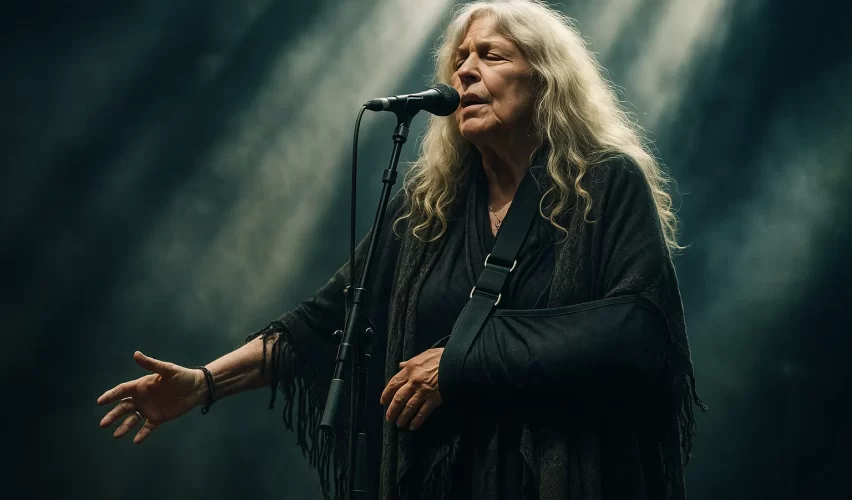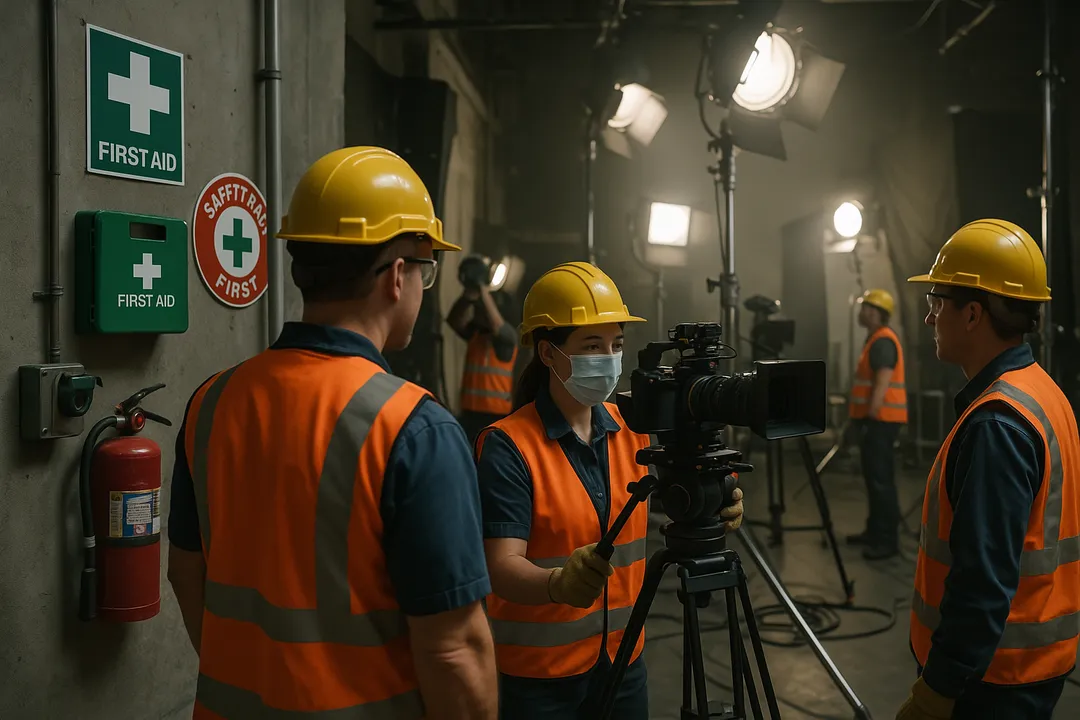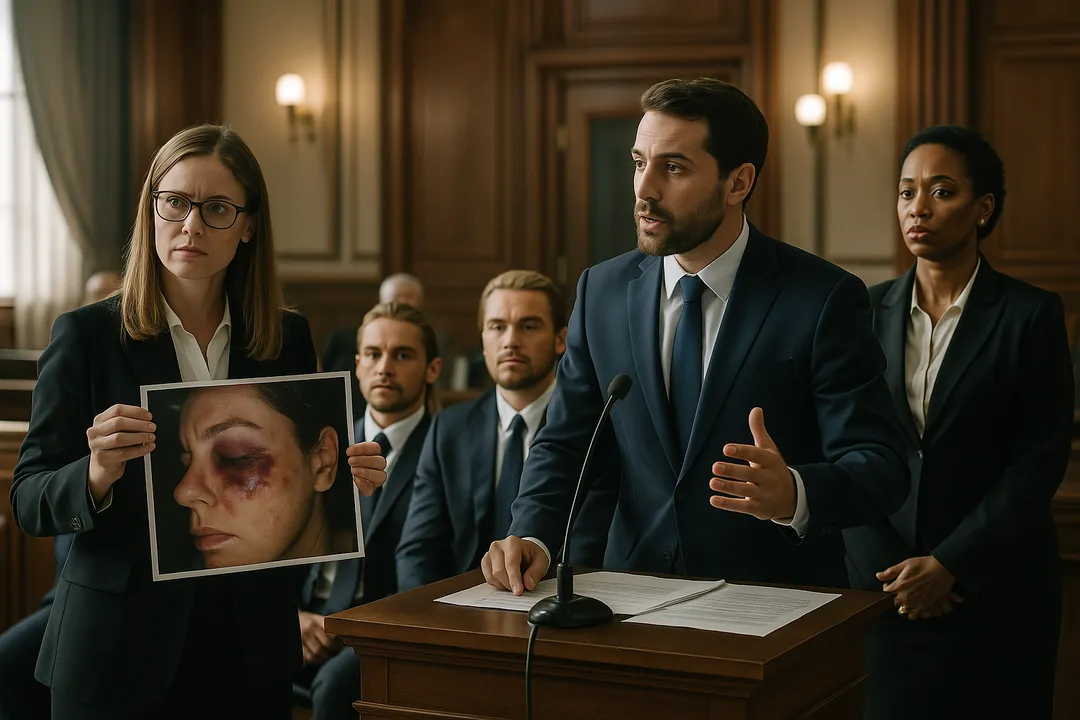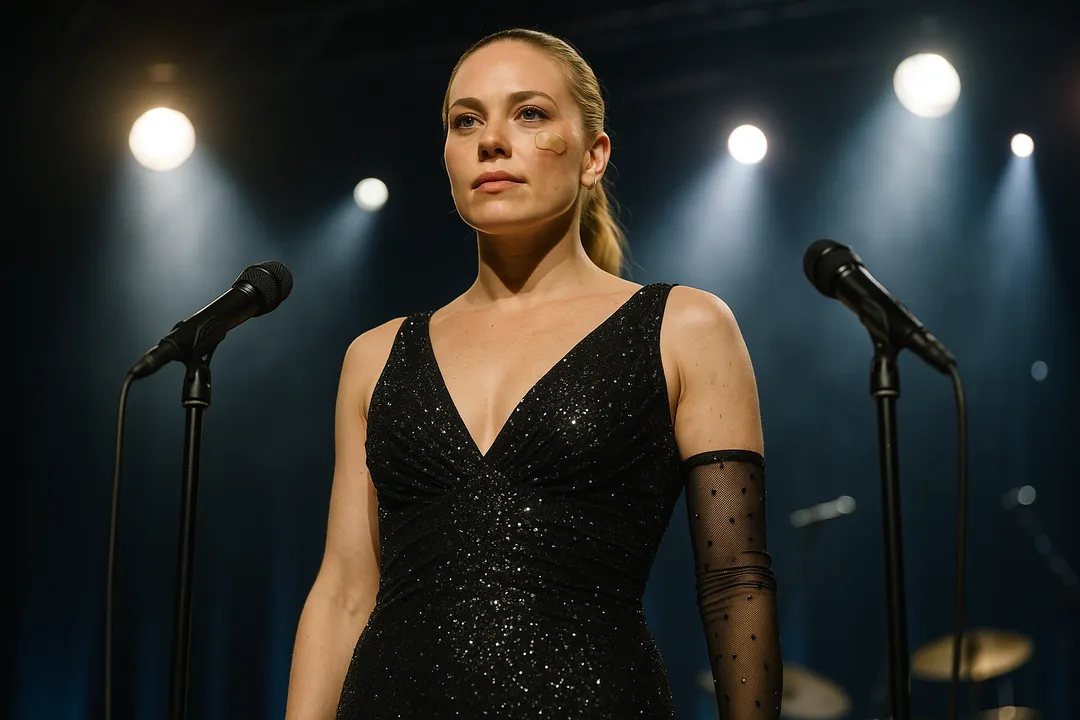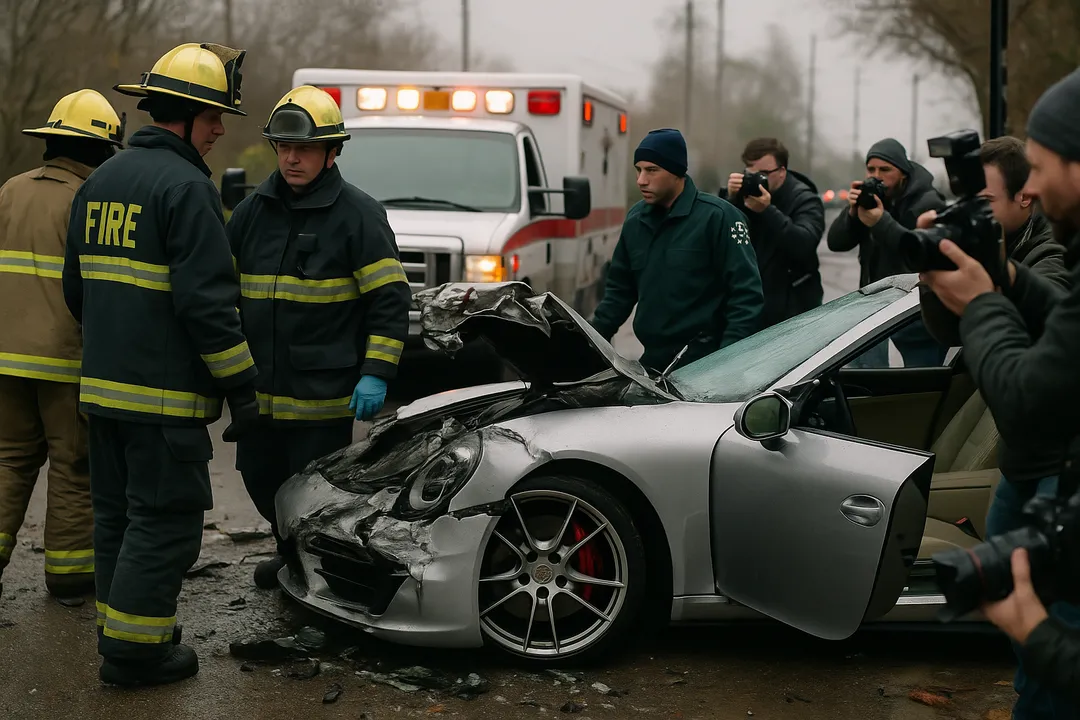The recent announcement that 77-year-old Fleetwood Mac legend Stevie Nicks has fractured her shoulder and postponed two months of her 2025 North American solo tour has brought renewed attention to the unique challenges facing aging performers in the entertainment industry. The injury, which occurred under undisclosed circumstances, highlights the complex intersection of age, performance demands, and legal liability that defines the modern entertainment landscape for older celebrities.
Nicks’ decision to postpone her tour dates rather than attempt to perform through the injury represents a significant shift from the traditional entertainment industry approach of “the show must go on.” This decision, while medically prudent, raises important questions about the financial, legal, and career implications of age-related injuries for established performers.
The lack of details about how the injury occurred has sparked speculation about whether it was related to performance activities, daily life, or other factors. This uncertainty highlights the challenges of determining liability and insurance coverage when aging celebrities suffer injuries that may have multiple contributing factors.

The Injury: What We Know and Don’t Know
According to official statements from Nicks’ representatives, the Fleetwood Mac icon suffered a “fractured shoulder” that requires significant recovery time. The injury has forced the postponement of tour dates originally scheduled for August and September 2025, with performances now rescheduled to begin in Portland, Oregon, on October 1, 2025.
The deliberate vagueness of the official announcement—providing no details about how, when, or where the injury occurred—is typical of celebrity injury communications but creates challenges for understanding the legal and insurance implications of the incident.
Shoulder fractures in individuals over 75 are particularly concerning due to the increased risk of complications, longer healing times, and potential for permanent functional limitations. The shoulder is a complex joint that is crucial for the arm movements and gestures that are integral to Nicks’ performance style.
The two-month postponement suggests that this is not a minor injury that can be quickly resolved. Shoulder fractures in older adults often require extensive rehabilitation and may never heal to full pre-injury function, particularly for individuals whose careers depend on physical performance.
Legal Framework for Age-Related Celebrity Injuries
The legal considerations surrounding injuries to aging celebrities like Nicks are significantly more complex than those involving younger performers. As we explored in our analysis of mental health injuries and celebrity recovery, age-related factors can complicate both the medical and legal aspects of celebrity injury cases.
Age discrimination laws may come into play if there are suggestions that Nicks’ injury was related to inadequate accommodations for an older performer. The entertainment industry has a legal obligation to provide reasonable accommodations for performers of all ages, and failure to do so could result in liability.
The question of whether Nicks’ injury was performance-related or occurred during daily activities is crucial for determining potential liability and insurance coverage. If the injury occurred during tour-related activities, various parties including venue operators, production companies, and equipment providers could face liability questions.
The age factor also affects the calculation of damages in any potential legal proceedings. While Nicks’ earning potential may be more limited due to her age, her established career and ongoing popularity mean that even a temporary injury can result in substantial financial losses.
Insurance Challenges for Aging Performers
The insurance implications of Nicks’ injury highlight the unique challenges facing aging performers in obtaining and maintaining comprehensive coverage. As detailed in our comprehensive analysis of celebrity body part insurance, age significantly affects both the availability and cost of entertainment insurance.
Insurance companies typically view older performers as higher-risk clients due to increased likelihood of injury, longer recovery times, and greater potential for complications. This can result in higher premiums, more restrictive policy terms, or in some cases, difficulty obtaining coverage at all.
Tour cancellation insurance becomes particularly important for aging performers like Nicks, whose injuries may be more likely to require extended recovery periods. However, these policies often have age-related exclusions or limitations that can affect coverage.
The financial implications of Nicks’ tour postponement are substantial, involving not only lost ticket revenue but also costs for rescheduling venues, refunding tickets, and maintaining tour infrastructure during the delay period. Insurance coverage for these costs depends on the specific terms of her policies and the circumstances of her injury.
The Physical Demands of Performance at Advanced Age
Nicks’ injury highlights the ongoing physical demands of live performance and the challenges of maintaining a touring career into one’s late seventies. Modern concert performances require significant physical stamina, coordination, and endurance that can be challenging for performers of any age but become increasingly difficult as artists age.
The entertainment industry has been slow to adapt to the needs of aging performers, often maintaining the same physical demands and performance expectations regardless of a performer’s age. This can create situations where older performers feel pressured to maintain unrealistic physical standards or risk being seen as unable to perform.
Shoulder injuries are particularly problematic for performers like Nicks, whose stage presence relies heavily on expressive arm and hand movements. The shoulder joint is crucial for the gestures and movements that are integral to her performance style and connection with audiences.
The healing process for shoulder fractures in older adults is typically longer and more complex than in younger individuals, with increased risk of complications such as frozen shoulder, chronic pain, or permanent loss of range of motion.
Financial Impact of Tour Postponements
The financial implications of Nicks’ tour postponement extend far beyond the immediate costs of medical treatment to encompass a complex web of contractual obligations, insurance claims, and revenue losses that affect multiple parties.
Modern concert tours are massive financial undertakings involving millions of dollars in advance costs for venues, equipment, personnel, and marketing. When tours are postponed due to performer injury, these costs must be managed and allocated among various parties according to contractual agreements and insurance coverage.
Ticket holders for postponed shows face their own challenges, including potential travel and accommodation costs that may not be recoverable. While most venues offer refunds or exchanges for postponed shows, fans may still incur losses that are not covered by standard ticketing policies.
The ripple effects of tour postponements can also affect local economies, particularly in smaller markets where major concerts represent significant economic events. Hotels, restaurants, and other businesses that depend on concert-related tourism may suffer losses that are not compensated by any insurance coverage.
Medical Considerations for Shoulder Fractures in Older Adults
The medical treatment of shoulder fractures in individuals over 75 requires specialized expertise and careful consideration of age-related factors that can affect healing and recovery. Nicks’ injury falls into a category of injuries that are both more common and more serious in older adults.
Shoulder fractures in older adults often involve the proximal humerus (upper arm bone near the shoulder joint) and can be complicated by osteoporosis, reduced bone density, and other age-related factors. The healing process is typically slower and may require more intensive rehabilitation than similar injuries in younger individuals.
The decision-making process for treating shoulder fractures in older adults must balance the goals of restoring function with the realities of age-related healing limitations. For a performer like Nicks, maintaining shoulder mobility and strength is crucial for career continuation, but aggressive treatment approaches may carry increased risks.
Physical therapy and rehabilitation for shoulder fractures in older adults requires specialized expertise and may take significantly longer than standard recovery protocols. The goal is not just healing but restoring the specific functional capabilities needed for performance.
Industry Adaptations for Aging Performers
Nicks’ injury and tour postponement highlight the need for the entertainment industry to better adapt to the realities of aging performers who wish to continue their careers. This includes both physical accommodations and legal protections that recognize the unique challenges faced by older artists.
Some production companies have begun implementing age-specific safety protocols and accommodations for older performers, including modified staging, additional medical support, and adjusted performance schedules. However, these adaptations are not yet standard across the industry.
The legal framework for protecting aging performers is also evolving, with increased recognition that age discrimination in entertainment can take subtle forms such as failure to provide appropriate accommodations or pressure to maintain unrealistic physical standards.
Technology solutions may also play a role in supporting aging performers, including assistive devices, modified instruments, and staging adaptations that reduce physical demands while maintaining artistic integrity.
Precedent Cases in Aging Celebrity Injuries
The entertainment industry has seen numerous cases of aging celebrities dealing with performance-related injuries, and these cases have helped establish legal precedents and industry standards for handling such situations.
Notable examples include aging rock stars who have modified their performance styles to accommodate physical limitations, classical musicians who have adapted their techniques to address age-related changes, and actors who have negotiated modified working conditions to continue their careers safely.
These precedent cases have generally established that aging performers have the right to reasonable accommodations and that the entertainment industry has a responsibility to adapt to the needs of older artists rather than simply replacing them with younger performers.
The legal principles established in previous cases involving aging celebrity injuries will likely influence how Nicks’ situation is handled, particularly regarding questions of accommodation, liability, and the responsibilities of production companies to provide age-appropriate working conditions.
The Role of Family and Support Systems
The management of aging celebrity injuries often involves complex family and support system considerations that can affect both medical and legal decisions. Nicks’ injury highlights the importance of having appropriate support systems in place for aging performers.
Family members and close associates may play important roles in medical decision-making, particularly if injuries affect cognitive function or decision-making capacity. The legal framework for these situations must balance performer autonomy with the need for appropriate support and protection.
The entertainment industry has begun to recognize the importance of comprehensive support systems for aging performers, including not just medical care but also legal, financial, and personal support that addresses the unique challenges of maintaining a career in later life.
Insurance Industry Response to Aging Performers
The insurance industry’s approach to covering aging performers has evolved significantly in recent years, with some companies developing specialized products designed to address the unique risks and needs of older entertainers.
These specialized insurance products may include coverage for age-related injuries, modified policy terms that account for longer recovery times, and additional benefits such as coverage for family support or modified performance arrangements.
However, the insurance market for aging performers remains challenging, with many companies still viewing older entertainers as high-risk clients. This can result in higher premiums, more restrictive coverage, or difficulty obtaining comprehensive protection.
Future Implications for Aging Celebrity Careers
Nicks’ injury and the industry’s response to it will likely influence how future cases involving aging celebrities are handled. The entertainment industry is grappling with the reality that many of its biggest stars are aging and may require different approaches to career management and injury prevention.
The legal and insurance frameworks for protecting aging performers continue to evolve, with increased recognition that age-related factors require specialized consideration in entertainment contracts and safety protocols.
The success of Nicks’ recovery and return to performing will be closely watched by other aging performers and industry professionals as a potential model for managing similar situations in the future.
The Economics of Aging Celebrity Careers
The financial dynamics of aging celebrity careers are complex, involving considerations of earning potential, career longevity, and the costs of maintaining performance capabilities as artists age. Nicks’ situation illustrates these economic realities and their legal implications.
While aging celebrities may have reduced earning potential due to shorter career horizons, their established fan bases and cultural significance can make them extremely valuable properties for promoters and venues. This creates economic incentives to support aging performers even when they require additional accommodations or support.
The cost-benefit analysis of supporting aging performers must consider not just immediate financial returns but also the cultural and artistic value of preserving important musical legacies and maintaining connections between different generations of fans.
Conclusion
Stevie Nicks’ shoulder fracture and subsequent tour postponement represent more than just another celebrity injury—they highlight the complex challenges facing aging performers in an industry that has traditionally prioritized youth and physical capability over experience and artistic legacy. Her decision to prioritize proper healing over immediate performance commitments demonstrates a mature approach to career management that may influence how other aging celebrities handle similar situations.
The legal, medical, and financial implications of Nicks’ injury illustrate the need for the entertainment industry to develop more sophisticated approaches to supporting aging performers.


